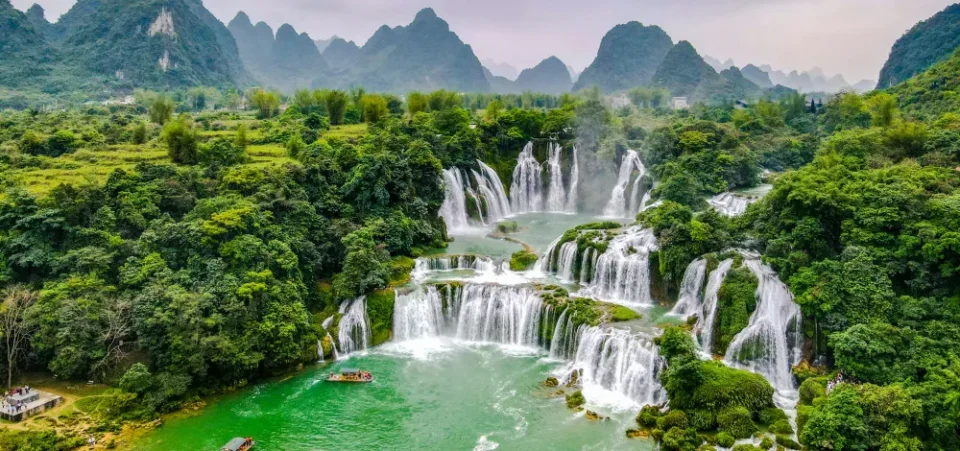Despite its relatively small territory, the tropical island country of Vietnam has a long coastline with beautiful beaches washed by the South China Sea. Since the sea is part of the Pacific and Indian Oceans, the water varies in different places: some areas have very clear water, some are warm, and some are cool. Consequently, the climate in different regions varies significantly in terms of weather factors. This article presents the best resorts in Vietnam.
Nha Trang
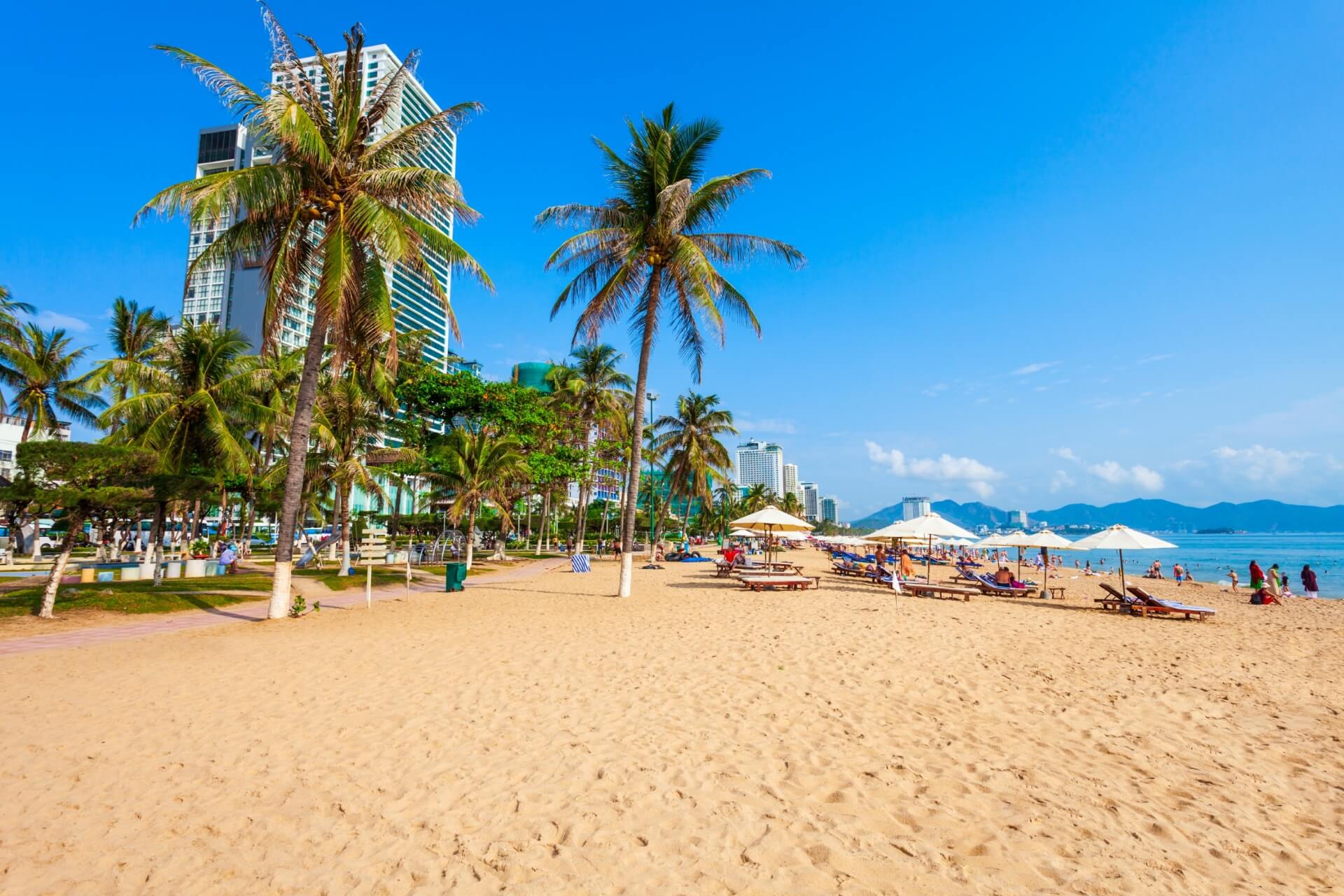
One of the most popular tourist resorts, Nha Trang is located on the shores of the beautiful bay of the same name. Anyone who visits Nha Trang for the first time is immediately captivated by its indescribably beautiful, almost fairy-tale landscapes. The harmonious combination of the white velvet sand with the gentle turquoise sea, lush green mountain forests, and yellow-gray rocks creates an irresistible picture worthy of admiration.
Here, you will find numerous quiet, peaceful coves with clear water, coral reefs, and stunning shells. The favorable climate throughout the year ensures a comfortable stay in these paradise places, with the sun almost always shining and an average annual temperature of +23°C.
The Truong Son mountains reliably protect the resort area from hurricane winds and storms, and there is significantly less rain here than elsewhere. The beaches here are extraordinarily beautiful, with soft sand equipped with paid (nominal prices) loungers and umbrellas. Beach equipment owners organize water activities: catamaran rides, scooters, and “bananas.” Nha Trang is also a wonderful health resort offering mud and hydrotherapy. There are many ancient attractions around Nha Trang.
Phan Thiet
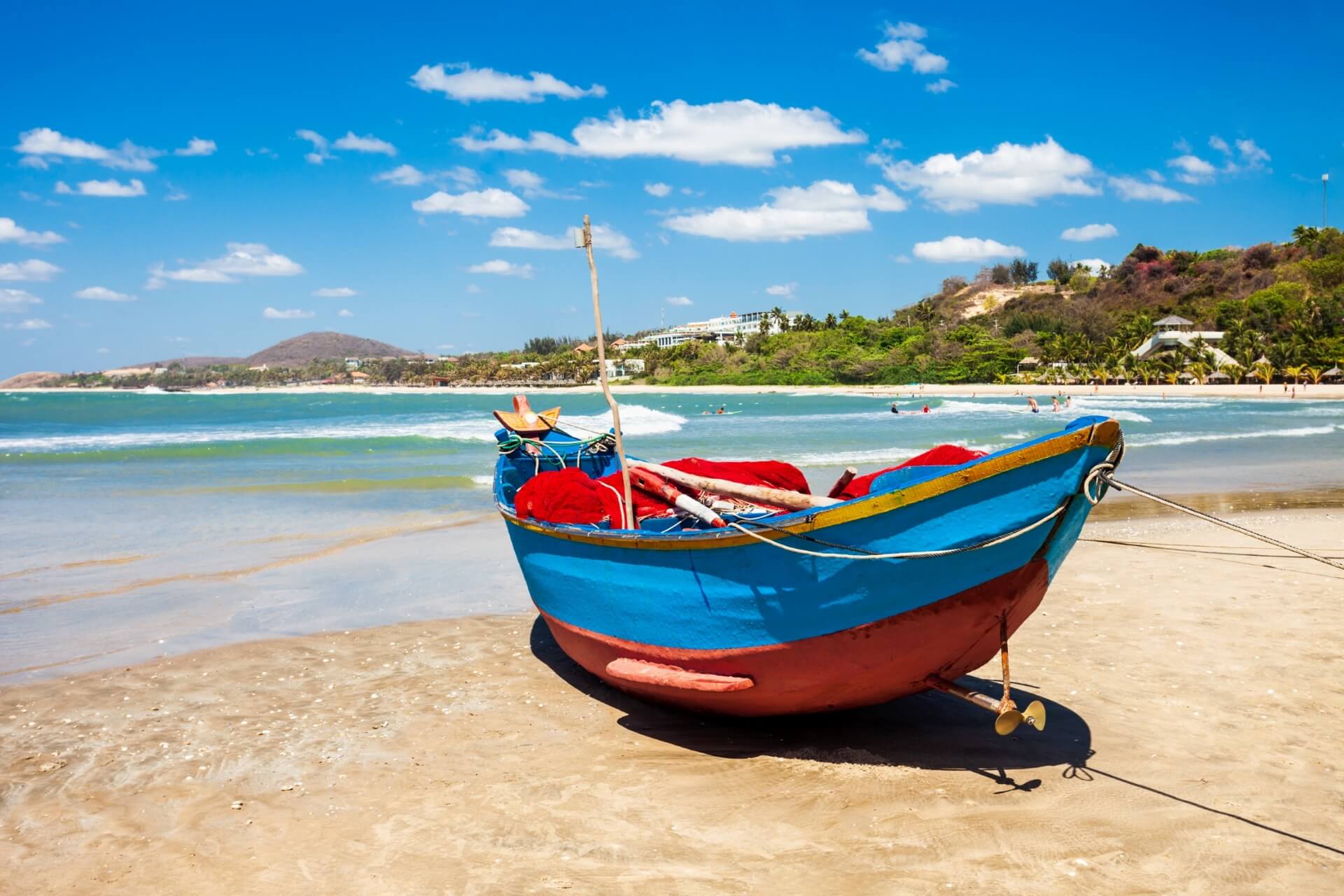
Rocks covered with sparse forests framing the turquoise sea, sandy dunes, majestic pines, and white strips of beaches describe the resort of Phan Thiet, located in southern Vietnam. In recent years, this small town has developed a tourist infrastructure comparable to major centers.
The city’s surroundings feature unique architectural and natural attractions not seen elsewhere, such as the Ke Ga lighthouse, the ancient Poshan ruins, the Buddhist church on the slope of Mount Ta Cu (475 meters high), and the Red and White dunes. Visitors enjoy not only the fantastically beautiful views, good conditions in local hotels, and beaches but also the dry, hot climate conducive to a full beach holiday.
In the autumn-winter months, when the sea has high waves, surfers and kite surfers flock here. Beginners can take lessons in special schools for water sports. Tourists in need of treatment can visit the thermal center organized near the Vinh Hao hot spring.
Da Nang
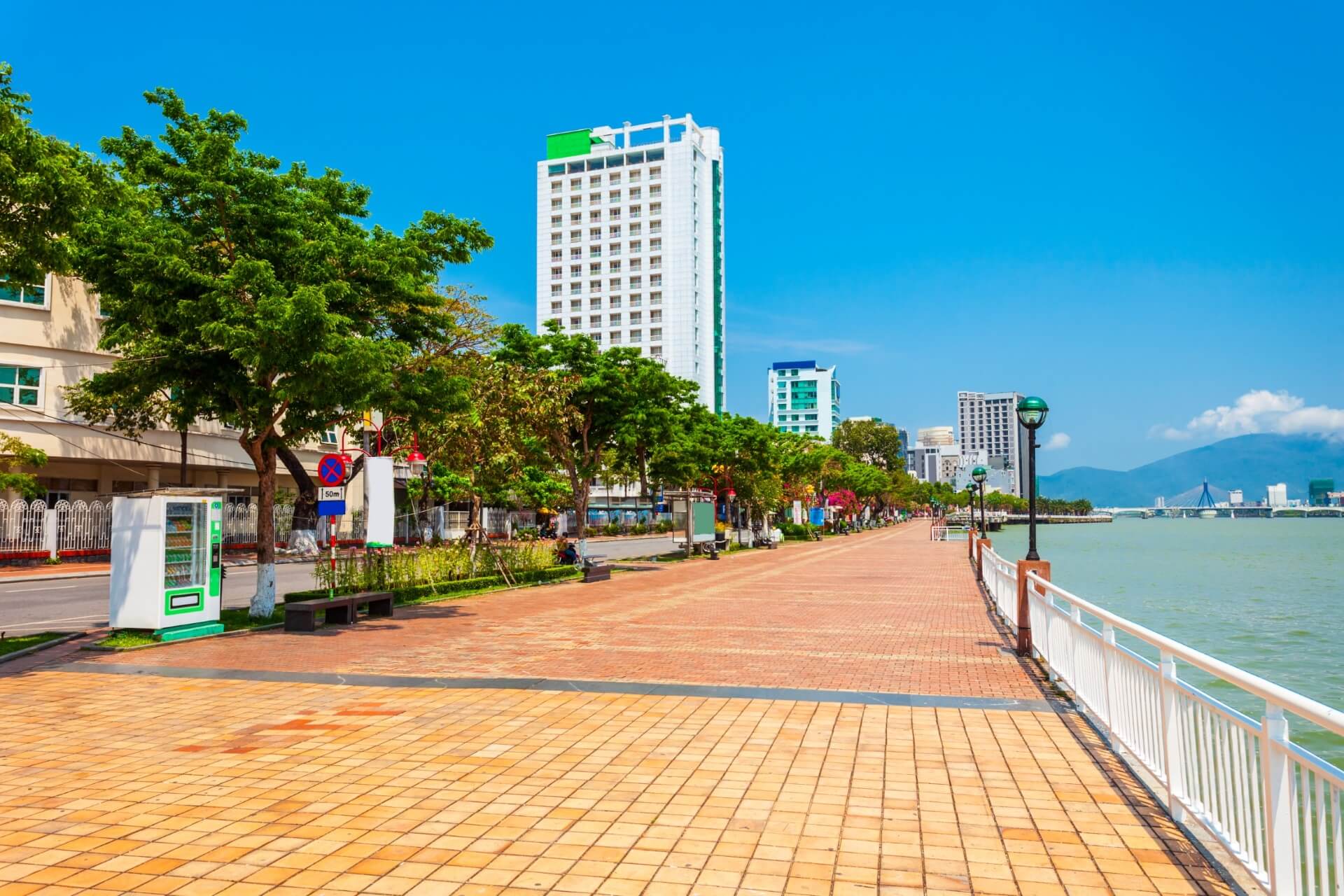
The fourth-largest city in Vietnam, Da Nang is not only a major transport hub with an international airport, railway, and highway but also a popular resort. Tourists are drawn here by the 40-kilometer stretch of white sand along cozy coves, ideal for a tranquil beach holiday.
The extensive beach space caters to both those who love lively entertainment and those seeking quiet solitude. Probably nowhere else is there a bridge with spans designed as rings and a dragon’s head. Within the city limits, the My Khe beach is highly sought after, with excellent infrastructure and a full range of entertainment options.
On weekends, the beach is crowded with people of all ages, with music and laughter heard until dark. One of Da Nang’s most elite beaches, China Beach, located 7 km from the city center, is listed among the world’s best beaches.
Along the 4 km coastline, there are luxurious hotels, numerous restaurants, and nightclubs. Nam O, located near the village of the same name, is an example of a remote, excellent beach for a secluded, comfortable stay.
Phu Quoc
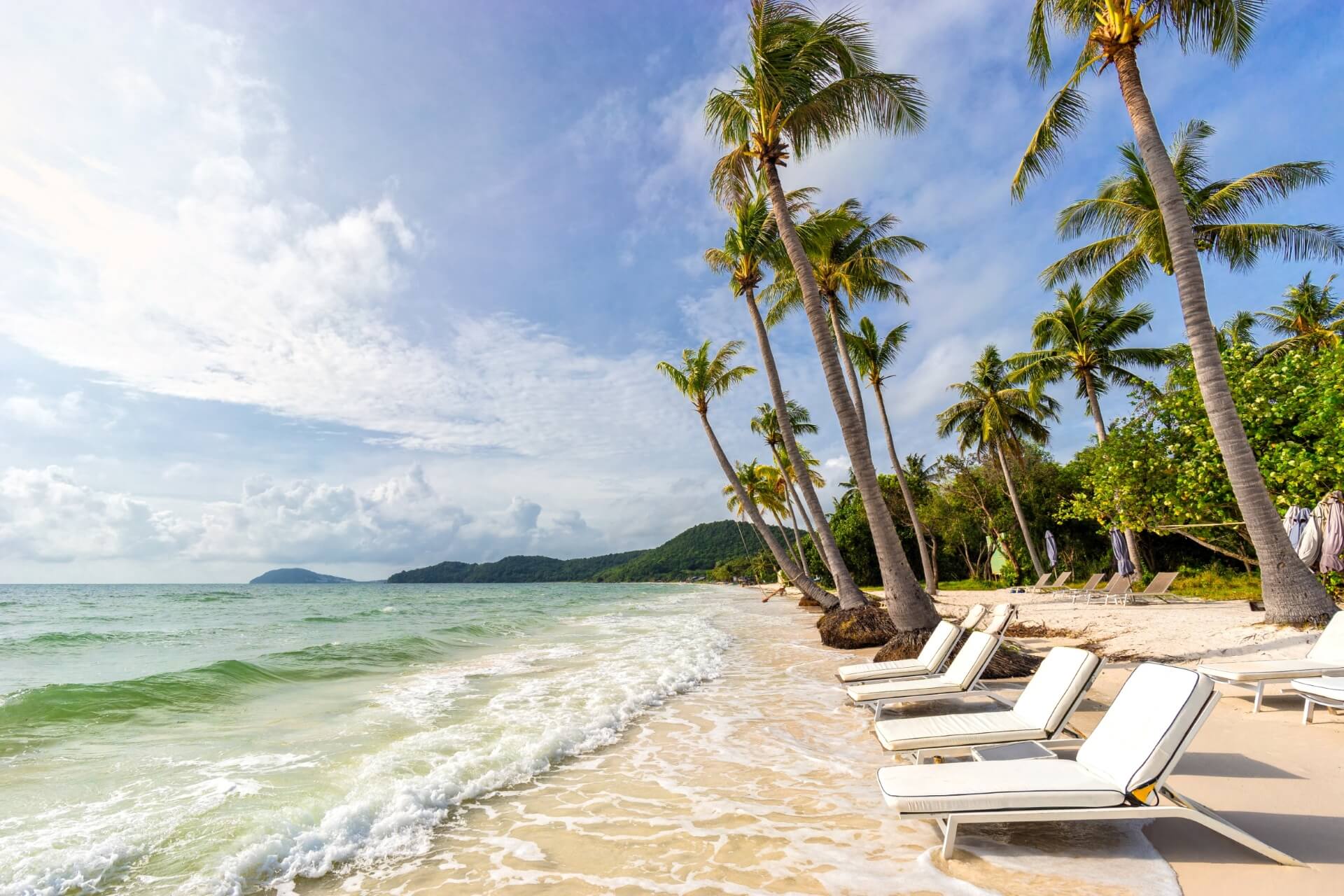
The lush, undeveloped nature, endless strip of beaches, and stunning landscapes characterize Phu Quoc (Pearl Island), Vietnam’s largest island. Due to its inaccessibility, it remained unnoticed by tourists for a long time, but in the late 20th century, tourism infrastructure began to develop rapidly, and an international airport was built.
Today, the entire island is a popular resort with a wide network of hotels, restaurants, and various entertainment venues. The high tourist season on Phu Quoc lasts from the second half of October to May. The 150 km of stunning sandy beaches and endless sea horizons offer numerous beach pleasures.
Popular beaches include Long Beach, Ong Lang, Bai Dai, and others. The stunning views, enchanting exotic forests and parks, their rich fauna, diverse underwater world, and unique ancient monuments make staying here both enjoyable and interesting.
Divers, snorkelers, surfers, and other water sports enthusiasts find Phu Quoc a paradise. Exploring the seabed with coral reefs and exotic fish brings immense pleasure.
Con Dao
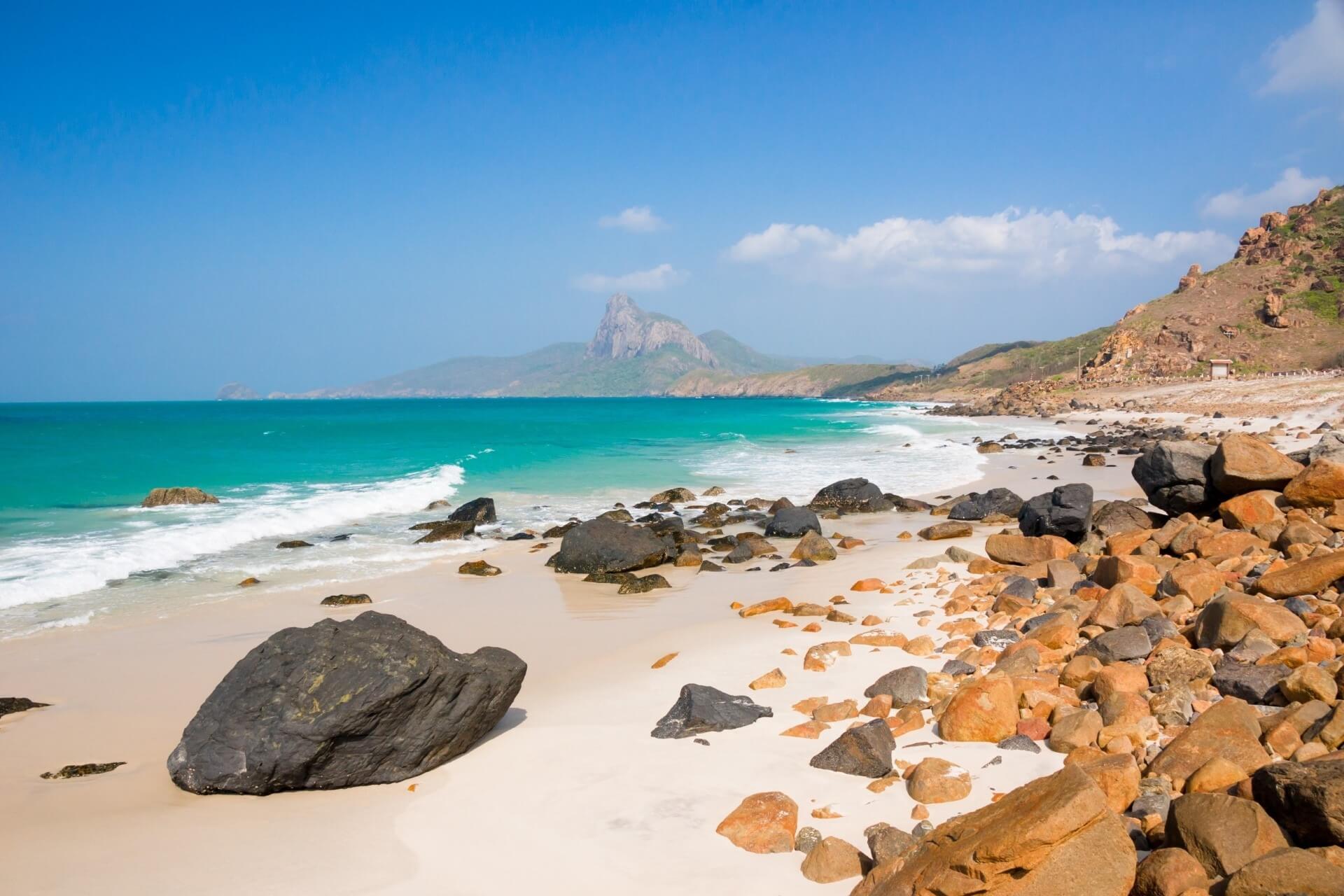
In southern Vietnam, there are still almost undeveloped tourist areas on 16 small islands (archipelago), with Con Dao being the largest where all infrastructure facilities are concentrated.
The airport, hotels, guest houses, and other amenities make these truly paradise places accessible to travelers who enjoy a tranquil stay amidst pristine mountains and forests, crystal-clear emerald-blue water, and white sand.
The underwater world delights with its diverse marine fauna: barracudas, giant turtles, dugongs, and other exotic creatures. Even experienced sea adventurers will find interesting activities here. A sea trip along the archipelago’s islands offers breathtaking landscapes, exotic plant thickets, cosmic sunrises, and sunsets.
Riding motorbikes along mountain serpentine roads allows one to test their skills and admire the stunning panorama below. According to experienced athletes, Con Dao is the best place for diving, snorkeling, and beach activities.
Sapa

Grown from a small village founded by the French in the 19th century as a refuge from the heat among high mountains and dense forests, Sapa in northwestern Vietnam is beloved by tourists. The surrounding nature creates such views that make one’s head spin.
Due to its high altitude, the weather here is unstable and changes several times a day. Sapa and its surroundings are a multi-ethnic area, home to several local tribes that have preserved their traditions and way of life. The highly developed network of hotels, food, and travel agency services ensures comfort, but modern infrastructure erases the charm of pristine nature.
Tourists strive to travel around the surroundings daily, venturing into the mountains and neighboring villages to meet their inhabitants. The town itself has interesting attractions that can be explored in one day. The church on the central square, with its architecture and interior, leaves no one indifferent. The local museum provides insights into Sapa’s history and the lives of local tribes.
Halong Bay
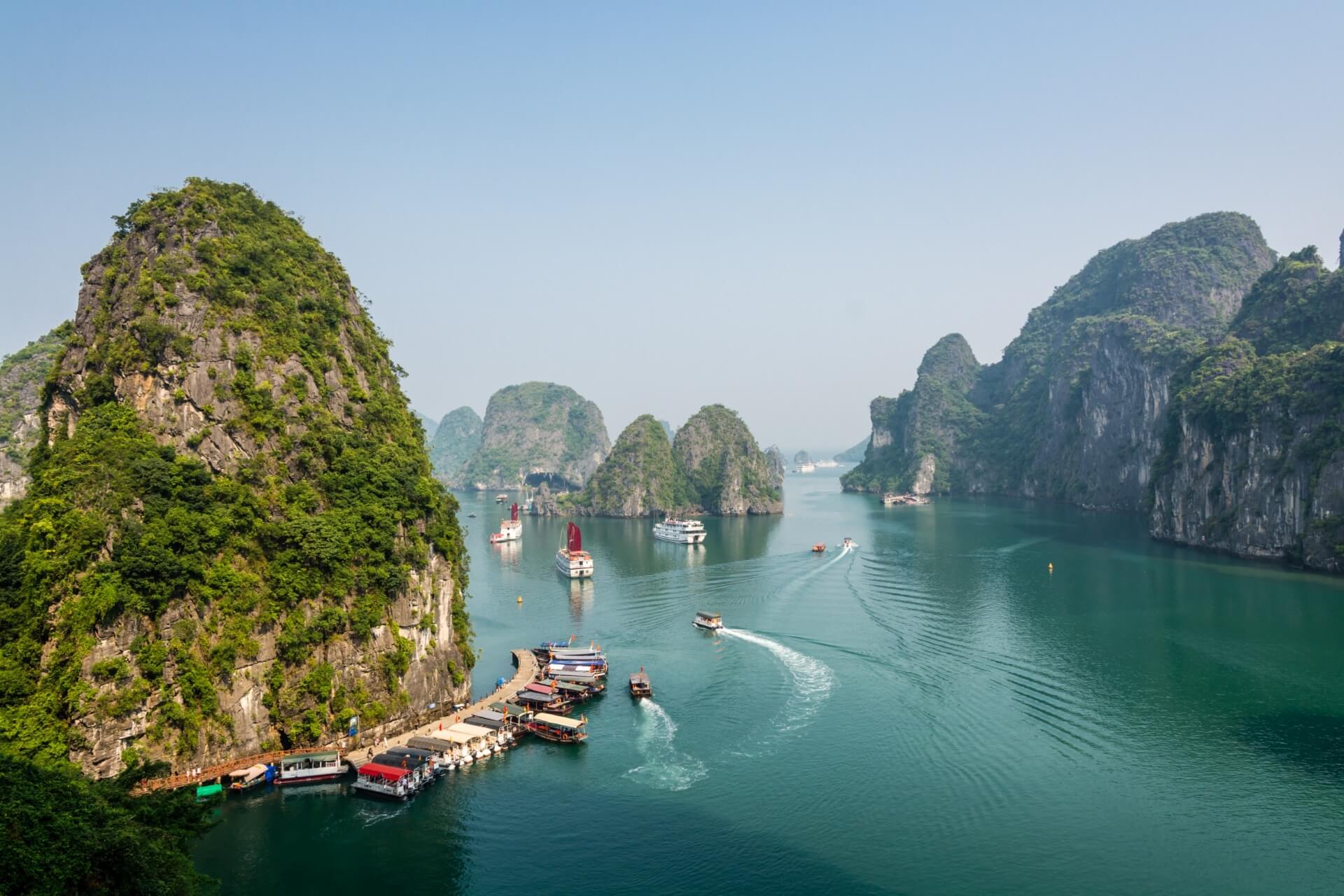
An insanely beautiful creation of nature, considered one of the wonders of the world, Halong Bay in the Gulf of Tonkin has long been inhabited by curious tourists from all over the planet. What draws them here is the extraordinary marine landscapes, making the bay a land of enchanting, mysterious beauty beyond ordinary logic.
The abundance of small islands (over 3,000), majestic rocks, and huge cliffs covered with the green velvet of tropical vegetation surround the emerald sea surface. Cruise boats and ships with tourists sail daily across the bay, exploring the whimsical natural objects and stopping at the most interesting places.
To get a full impression of all the bay’s wonders, one should go on a cruise with one or two overnight stays. One can admire the passing fantastic landscapes while lounging on deck chairs on the deck. On one of the islands, tourists visit the Sung Sot Grotto, a karst cave that amazes with its stalactites and stalagmites, and its whimsical combination of colors and forms.
From the observation deck, one can take in the entire beauty of Halong. A visit to a pearl cultivation factory is also fascinating. Many activities await tourists on the cruise, from kayaking and fishing to vibrant national dances.
Hue
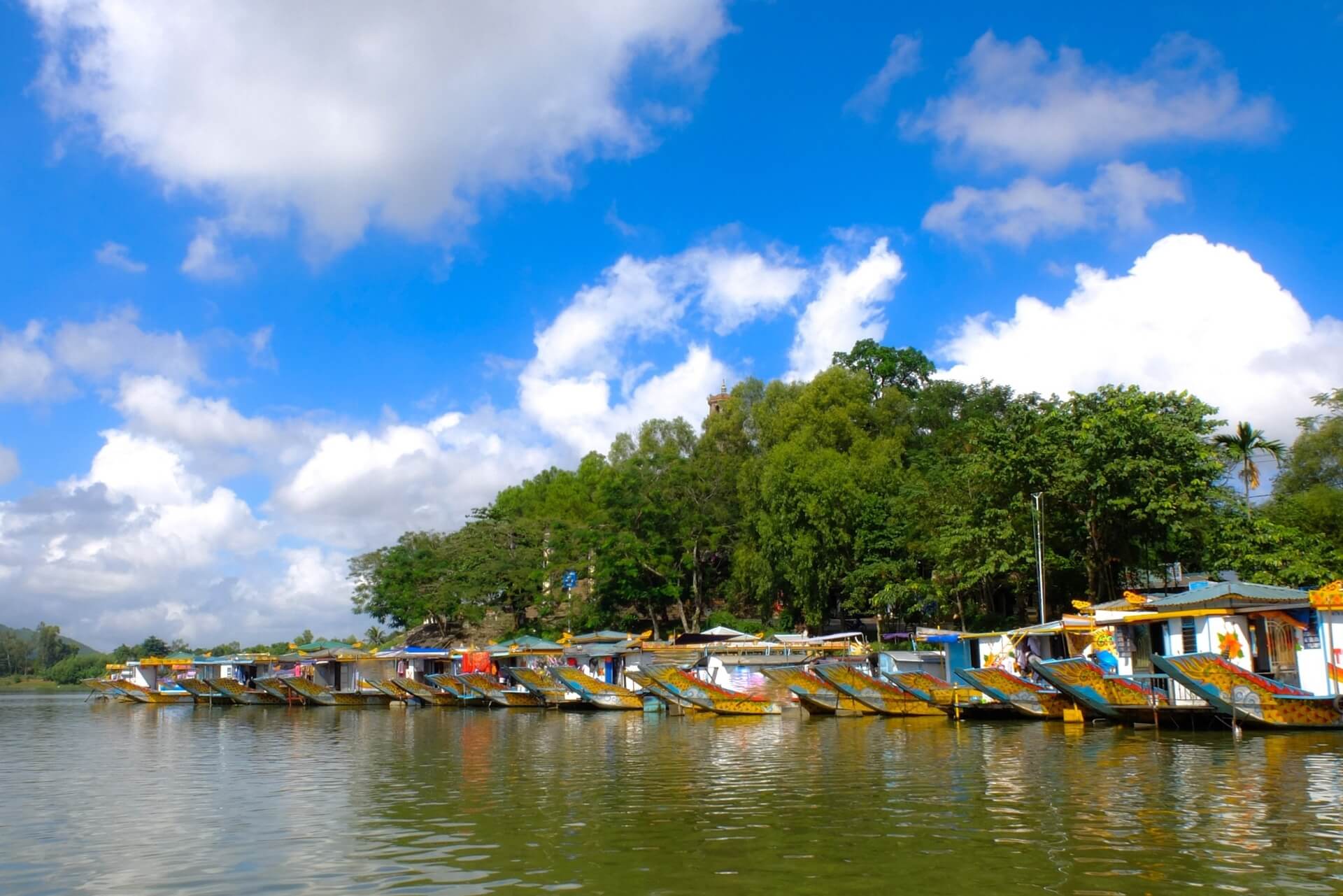
This ancient city cannot be fully considered a typical seaside resort offering a full beach vacation (the nearest sea coast is 12 km away). There are river sandy beaches without infrastructure here. Hue is an intriguing tourist destination with numerous cultural, historical, and religious monuments, unique architectural and defensive structures, and the former capital of Vietnam during the Nguyen imperial dynasty.
All its heritage is protected by UNESCO as a cultural world heritage. The picturesque appearance of Hue captivates with its beautiful modern buildings surrounded by lush trees and flower beds in the modern part of the city, and the stunning palaces, temples, parks, and monuments in the historical center.
The sight of the Perfume River, with its elegant bridges and riverside gardens, dividing Hue into two halves, is delightful. The Imperial City, home to the Thien Mu Pagoda, seven memorial tombs of Vietnamese rulers, incredibly colorful palaces, Buddha statues, elaborately decorated cemeteries, and more, is a pilgrimage site for tourists.
Hoi An
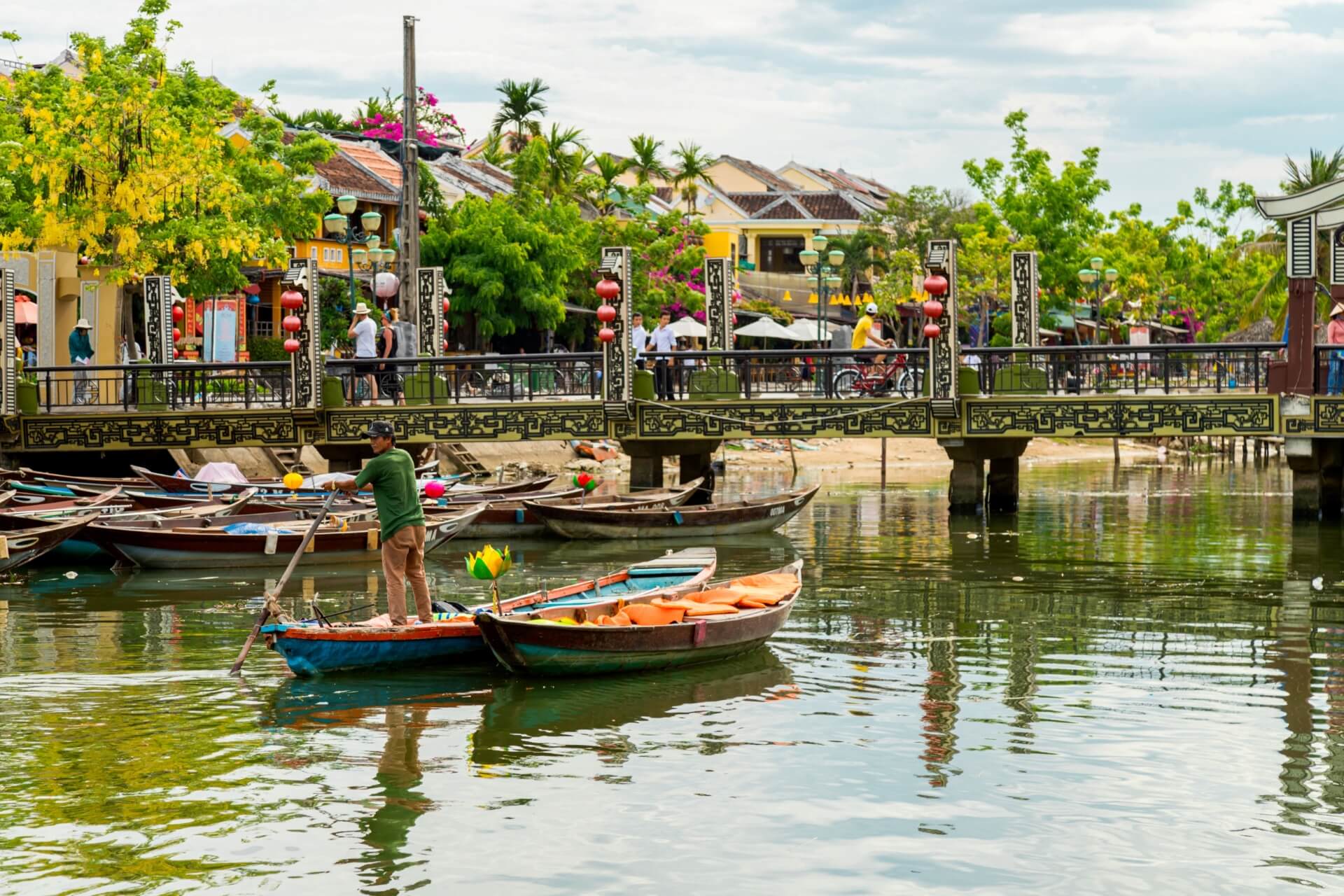
Visiting the extraordinarily cozy and romantic town of Hoi An, located on the enchanting coast of the South China Sea, offers unforgettable impressions. The luxurious beach with white sand, stunning marine landscapes, and Hoi An itself, listed as a UNESCO World Heritage Site, are all highly attractive.
The old historical part of Hoi An, with architecture reflecting the eras of colonial rule by other countries, is of great interest. The historic area of Hoi An can be called a small Asian Venice, with canals where narrow Vietnamese boats replace gondolas.
Among the buildings (mostly yellow), there are authentic Chinese houses, pompous French mansions, and the legendary Japanese Covered Bridge with a pagoda. Like ornate carved boxes, Vietnamese houses, richly decorated with various ornaments, fit in between them.
Hundreds of tourists love to visit the Japanese Bridge, ride along the canals, and enjoy Vietnamese food in numerous cozy cafes after the beach.
Dalat
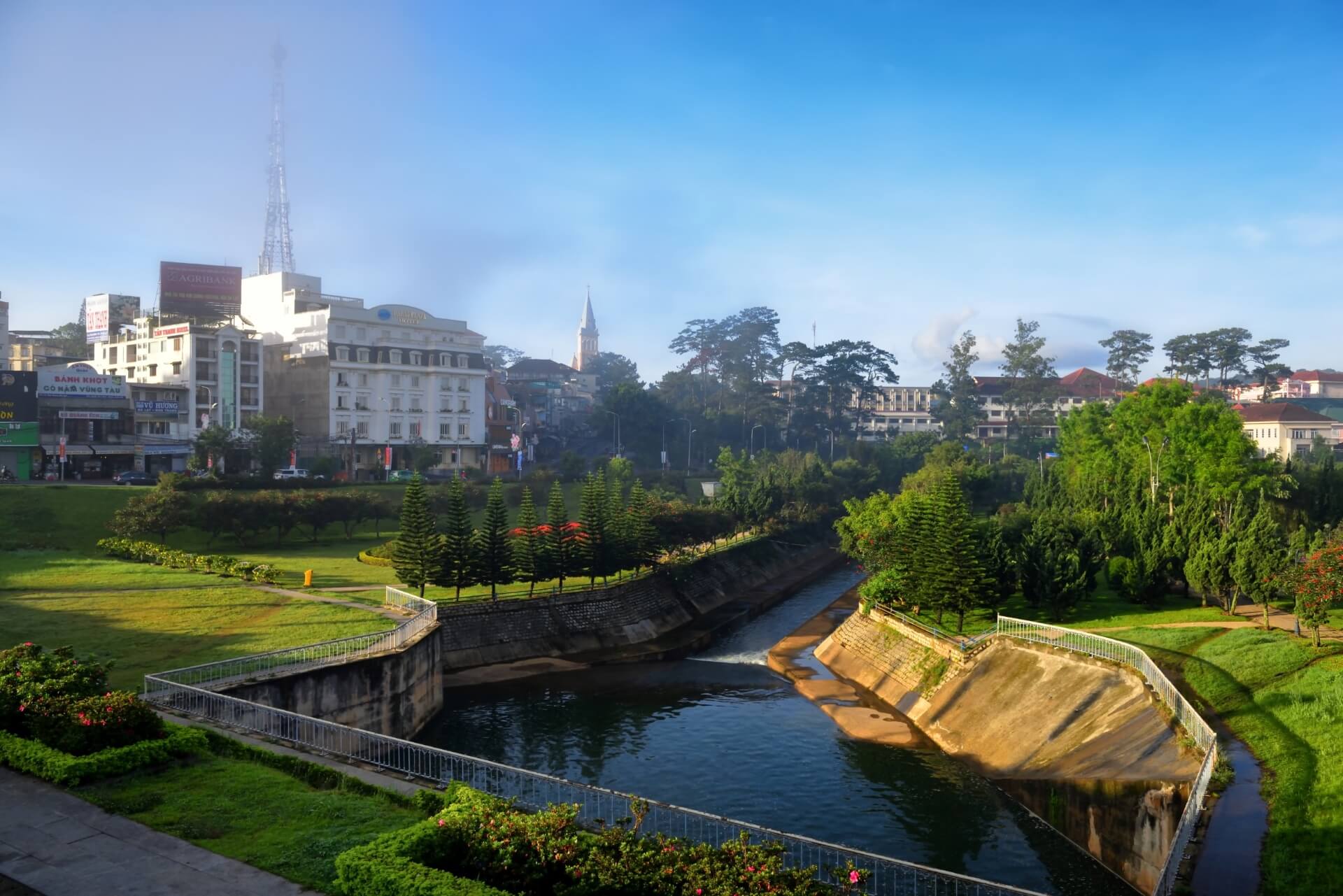
Located at an altitude of 1,500 meters above sea level, Dalat is now a popular highland resort, often referred to as the Vietnamese Swiss Alps. Naturally, there is no sea or beaches here, but staying amidst incredible natural beauty, clean air, and a unique Eastern charm brings many positive emotions.
Even before the city was founded, French colonists built their villas in these wonderful places. The local climate allows for the ripening of exotic fruits and the cultivation of tea and coffee. Vietnamese newlyweds often spend their honeymoons here, and many artists find inspiration in the stunning views of the surroundings.
Although Dalat is relatively “young,” with no ancient historical monuments, it has many pagodas and temples, including Evangelical and Catholic churches, the Cathedral, the Thien Vien Temple, and others.
It is interesting to visit the Summer Residence of the last Vietnamese emperor Bao Dai, where everything is preserved in its original state, the Local History Museum, the French Quarter, and the Monastery of the Virgin Mary. The most vivid impressions come from admiring natural wonders: the Gougah, Dambri, and Pongour waterfalls, the Flower Park, the Valley of Love, and picturesque lakes.
Vung Tau
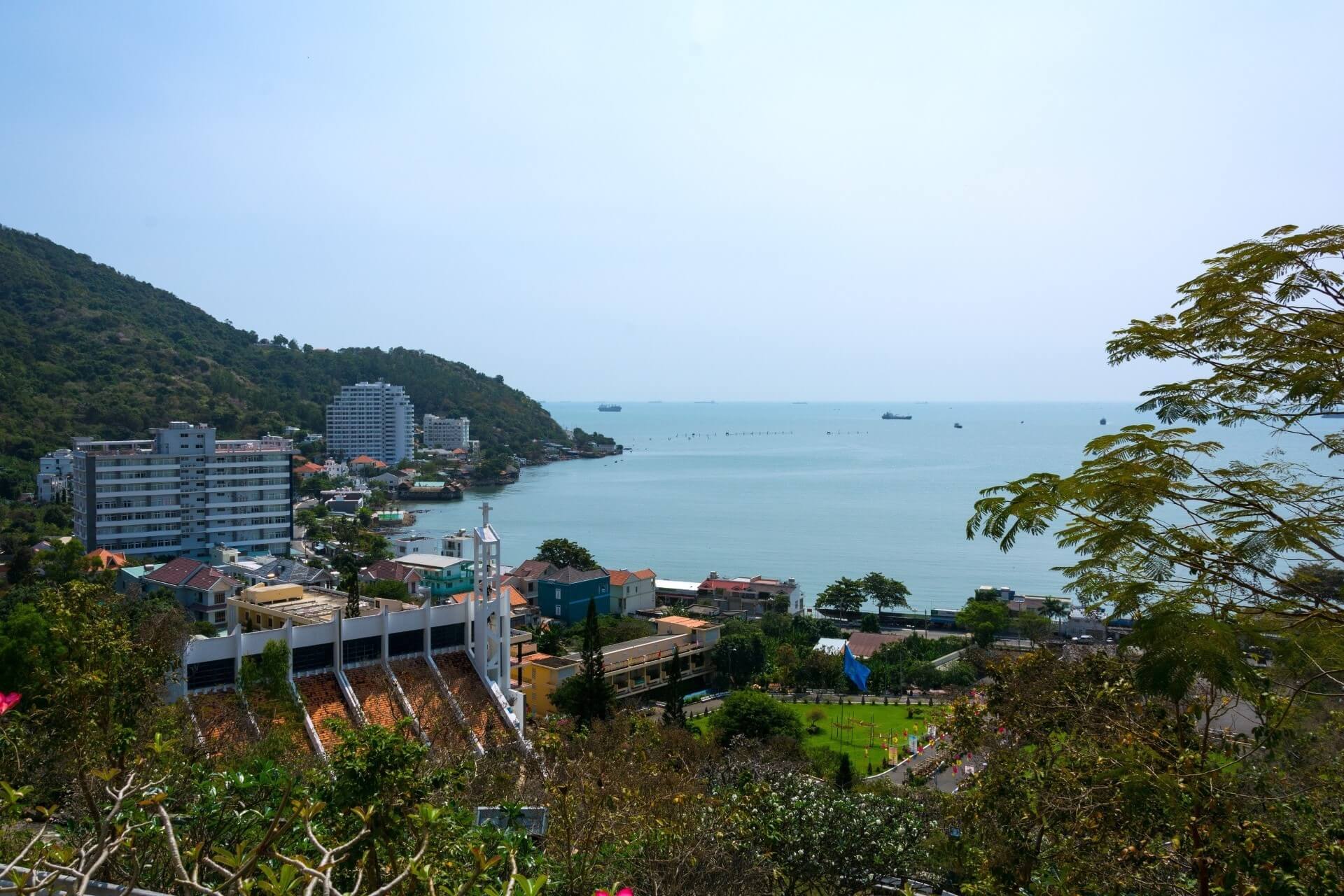
Located on Cape St. Jacques, the large trading and industrial city of Vung Tau has recently become rich and prosperous, thanks to offshore oil production. Excellent roads, wide streets, luxurious landscaped parks, chic mansions and villas, and upscale restaurants characterize the developing city and resort of Vung Tau.
The South China Sea’s multi-kilometer golden beaches and beautifully designed promenade are filled with Vietnamese and tourists on weekends. The only downside is that trash brought by the river accumulates at the confluence of the Mekong near the beaches. The natural leisure activity in this seaside city is beach relaxation, which has its peculiarities: the sea here is almost never calm due to constant winds.
There is usually a strong surf off the coast, the water is murky, and there are high waves, with no paradise marine landscapes. However, extreme sports enthusiasts will find plenty of opportunities for surfing and kitesurfing. There is also the so-called Front Beach, where waves are rare, allowing for comfortable swimming against the backdrop of green mountain ranges. Strolling through well-kept, cozy parks is a delightful activity for tourists and locals alike.
Hanoi
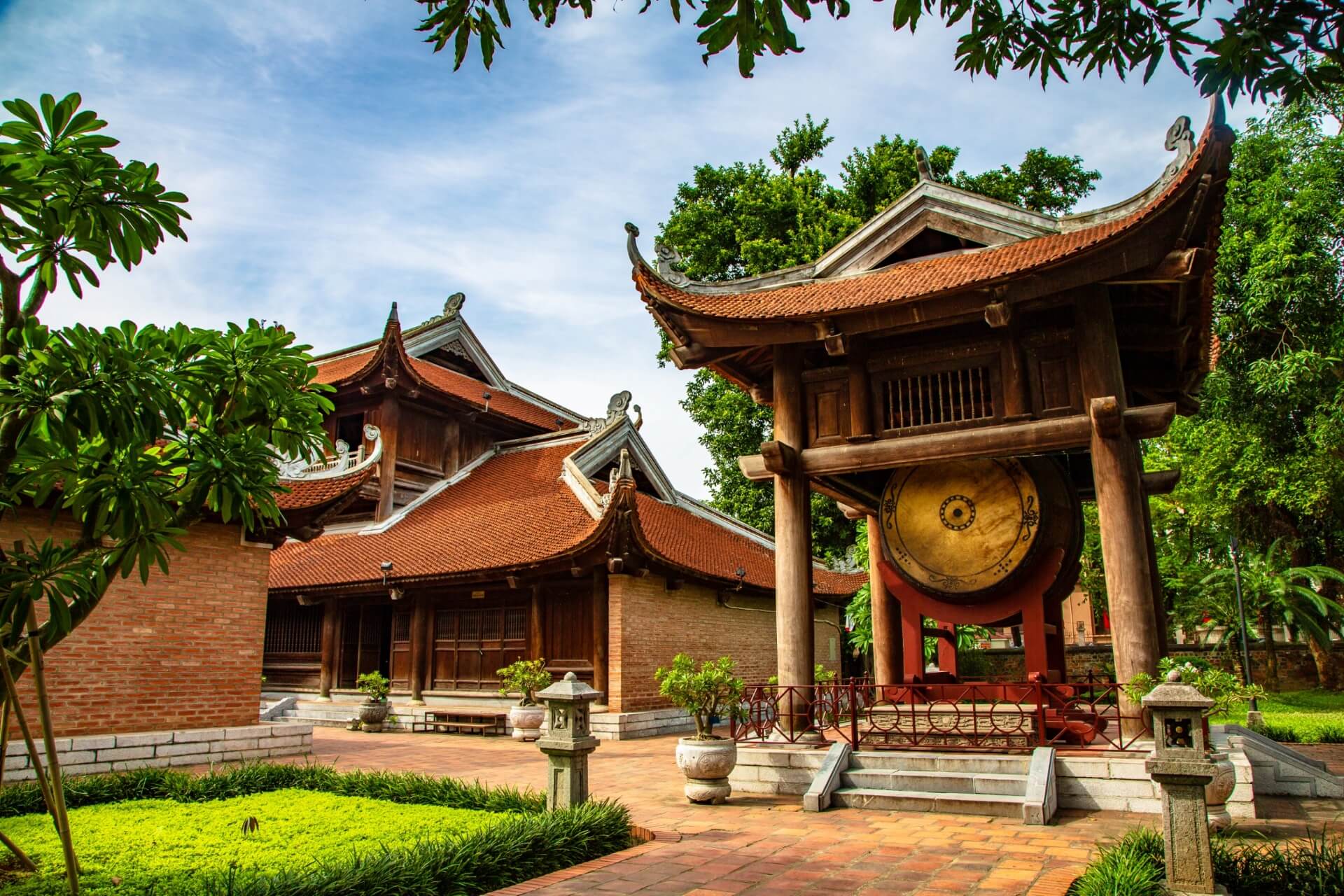
The capital of Vietnam is a blend of ancient Asian exoticism and the modern business rhythm of life, where amid rare monuments and temples, motorcycles and shiny cars rush by, and bicycle rickshaws offer their services near modern buildings. The paradoxical appearance of Hanoi, one of the top ten most visited cities in the world, attracts thousands of tourists.
For many, Hanoi is the point of arrival in Vietnam and the starting point for traveling around the country. Everyone tries to see as many of the city’s amazing attractions as possible. Hanoi has no sea beaches, so the stay here is filled with excursions to interesting sites.
Tourists have access to a wide range of hotels of various price categories, from luxurious high-rises to tiny budget hotels. Tourists enjoy walking around the picturesque Lake of the Returned Sword, visiting the Water Puppet Theater, the local Opera House, the Old Quarter (with its 50 streets), and its interesting national houses and historical monuments. Everyone goes to the iconic Huc Bridge, famous for its unique design and bright red color, and visits dozens of Buddhist temples and pagodas.
Ho Chi Minh City
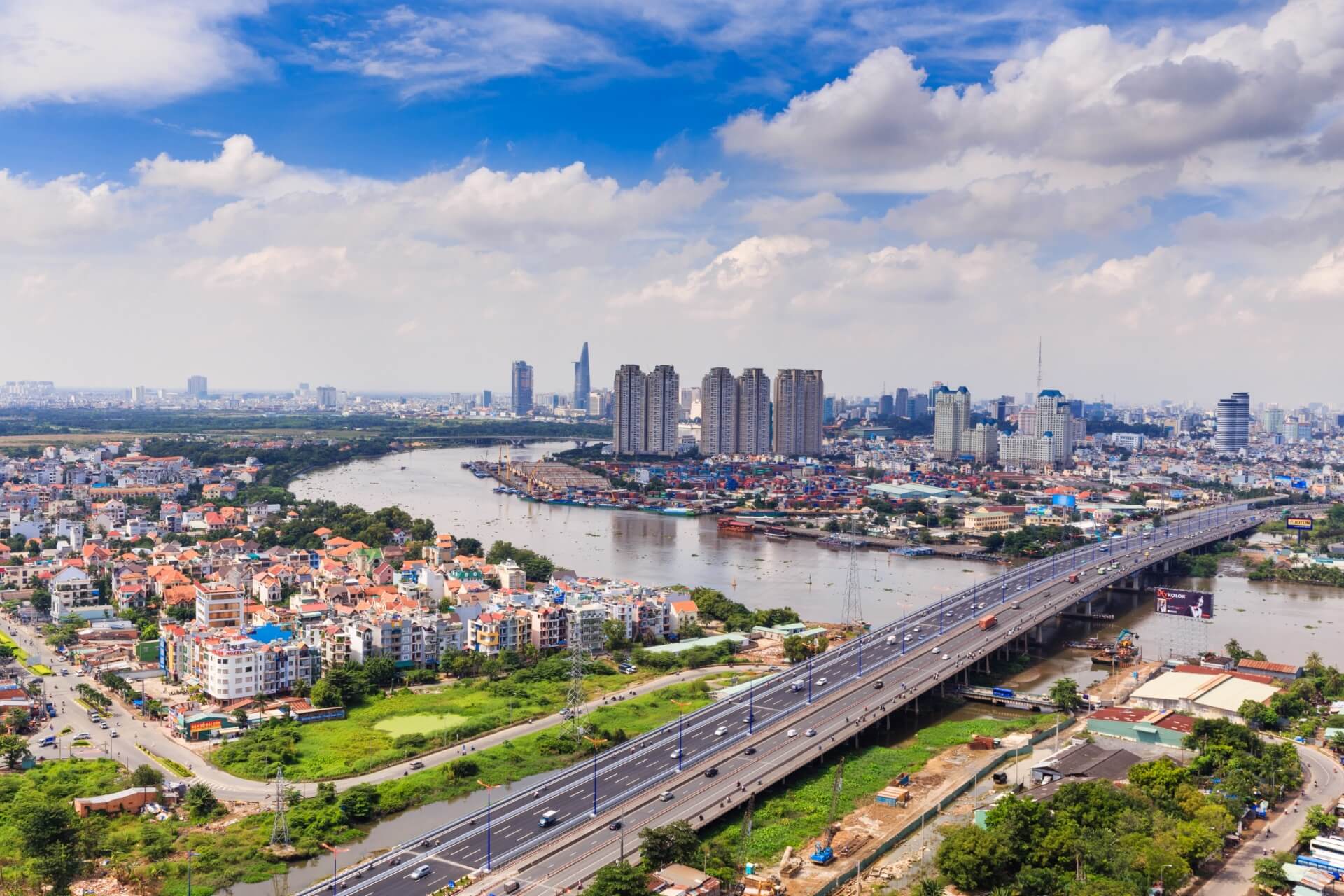
A large, rapidly developing city formerly known as Saigon, Ho Chi Minh City is a model of a modern tourist and industrial metropolis, with numerous hotels, guesthouses, hostels, and other accommodations for foreign guests.
Some visitors come here specifically to immerse themselves in the bustling atmosphere of European chic, Asian exoticism without beaches and the sea, and the extraordinary friendliness of its residents. For many, Ho Chi Minh City is a transit point for traveling to other regions of Vietnam. There are several significant historical monuments here, some of which are monumental.
The Reunification or Independence Palace, surrounded by a beautiful park, was built to commemorate Vietnam’s liberation from the French and Americans (1868). Noteworthy are the Cao Dai temple complex, the Vinh Nghiem Pagoda, the War Remnants Museum, and others. A must-see for tourists is a trip to the mangrove forests (40 km from the city), a visit to the Cu Chi Tunnels, and the Black Lady Mountain.
Long Hai
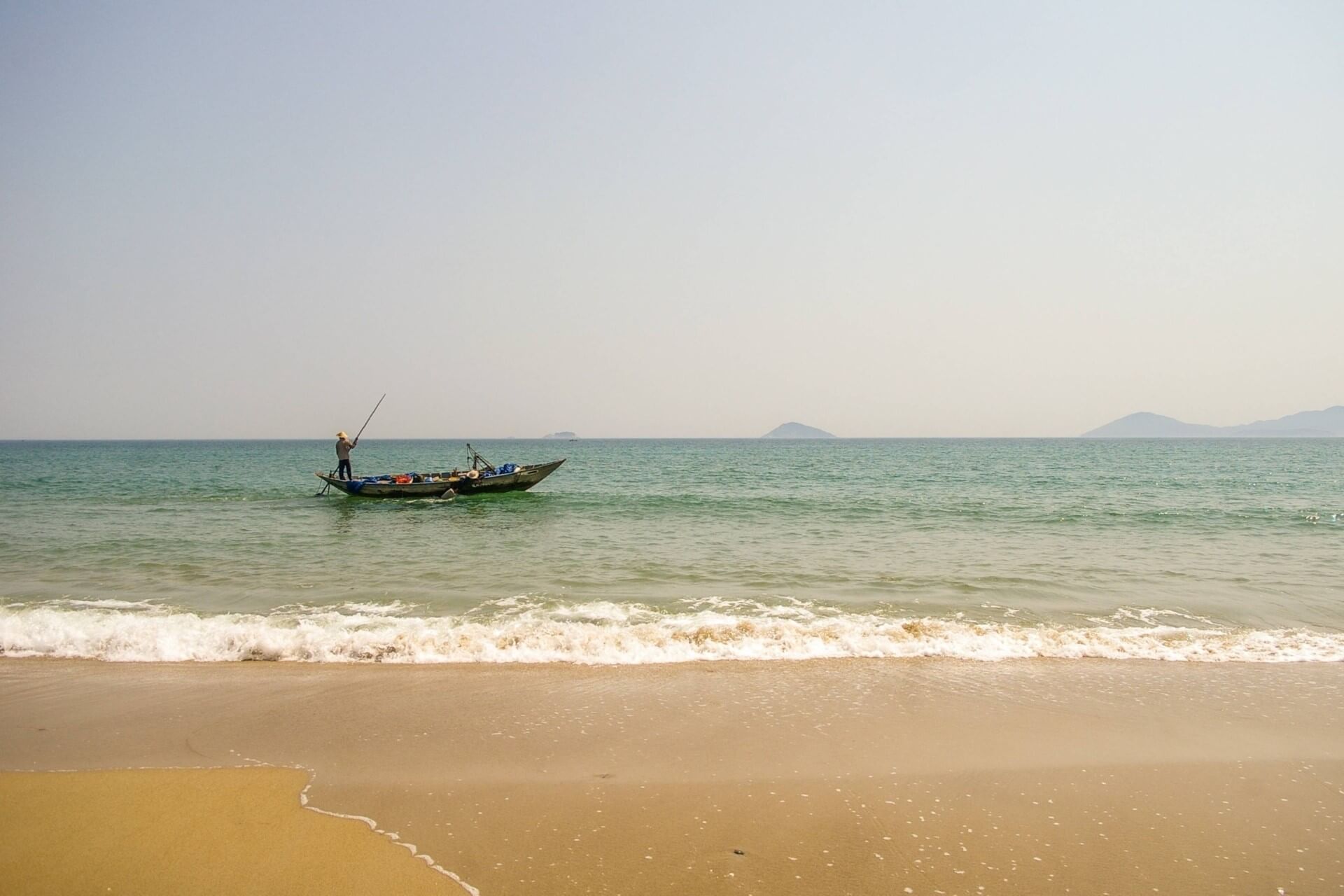
A small, cozy town located amidst the picturesque beauty of one of the South China Sea’s capes is famous for its wonderful beaches, warm water, and mild climate. The water and air temperature is almost always comfortable here, allowing for year-round beach enjoyment.
Long Hai is famous for its Binh Chau thermal springs and healing mud, attracting visitors from all over Vietnam. Tourists need not worry about accommodation: comfortable villas, numerous dining establishments, well-maintained beaches, and a beautifully designed promenade are at their service.
Various shops and stalls offer national souvenirs and crafts by local artisans. The city organizes excursions to incredibly interesting and beautiful places, such as Can Gio Island, where there are mysterious caves, underground labyrinths, a sacred pagoda, and a fisherman’s temple. During cherry blossom season, it is worth visiting Quan Cape to admire the stunning spectacle.
Phan Rang
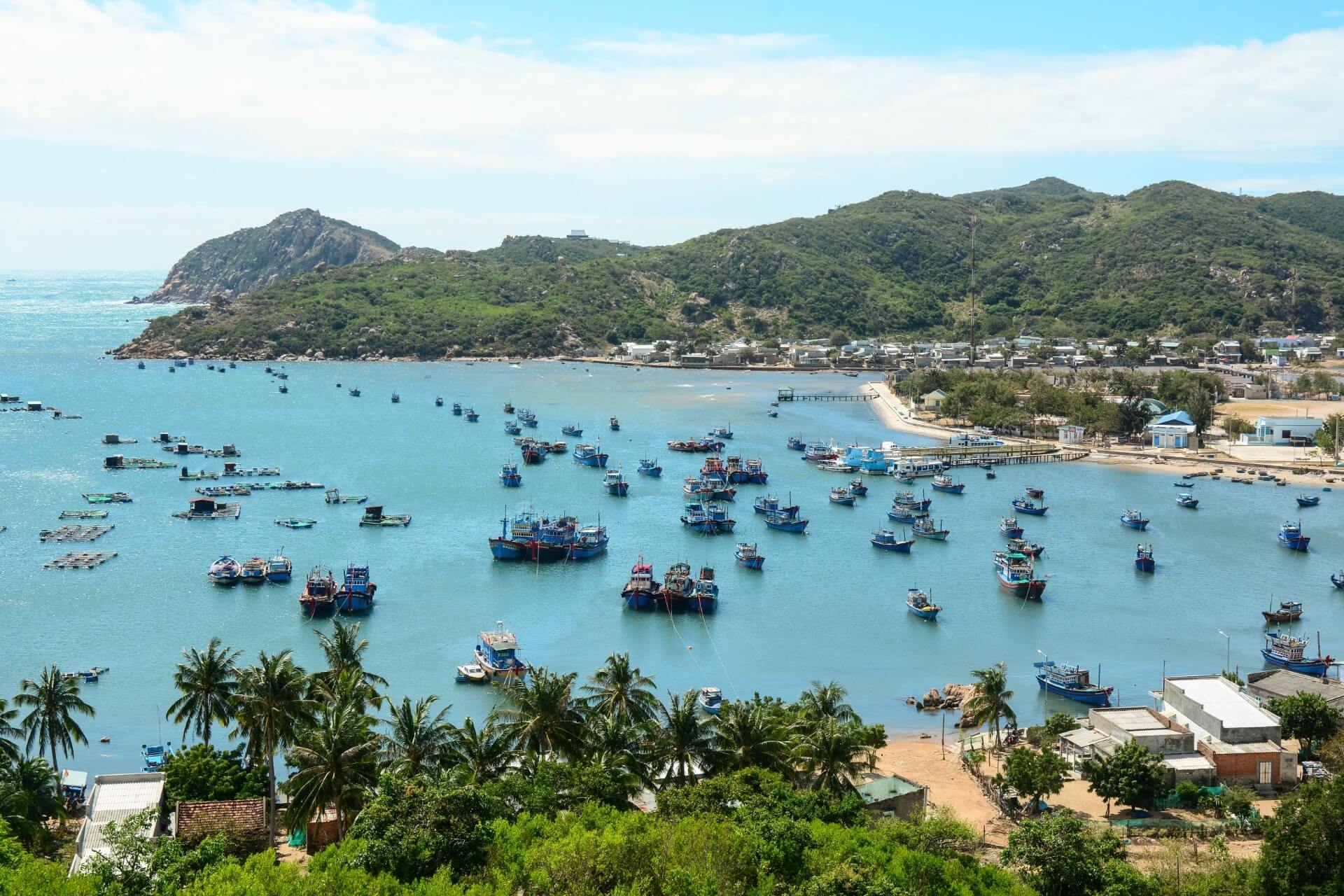
The southern Vietnamese resort of Phan Rang is not as popular as Nha Trang, but it has many attractive features promising a tourist boom. There are excellent beaches with gentle slopes into the water, perfect for family vacations with children. One of them is Ninh Chu, with a wide strip of fine golden sand, surrounded by a low mountain range on one side, providing wind protection.
Thermal springs (3) with healing mineral water and mud are found in the surroundings of Phan Rang. Water sports enthusiasts head to Ca Na Beach (25 km from Phan Rang) for snorkeling and exploring marine depths. History lovers take the funicular to Ta Cu Mountain to see the giant Reclining Buddha statue and the Linh Son Pagoda.
North of Phan Rang, the ancient towers of the Thap Ba complex attract attention, while near Phan Thiet, the Cham towers, which are 1,500 years old, can be found. Tourists visit Bau Truc, a village where residents have been making ceramic tableware for centuries. Here, one can not only buy a souvenir but also observe the manufacturing process.
Which Resort to Choose for Families with Children

All parents traveling with children to seaside resorts aim to improve their child’s health in the most comfortable conditions. Cities like Nha Trang, Phan Thiet, the village of Mui Ne, and Phu Quoc Island can provide this. The soft, fine sand on their beaches is ideal for children, and the sea near the shore is well-heated. Local cafes can prepare vegetable puree, steamed fish, and meat upon request, and shops offer a wide selection of milk formulas, fruit, and fish purees.
Nha Trang has many entertainment facilities: playgrounds, an aquarium, an oceanarium, pools, and a 10-kilometer beach strip. Russians with children enjoy vacationing in Phan Thiet and Mui Ne, appreciating their excellent local beaches and hotels and interesting attractions. Phu Quoc offers children a peaceful leisure time, comfortable weather, swimming in clear, clean sea water without typhoons and high waves.
The Best Time to Travel
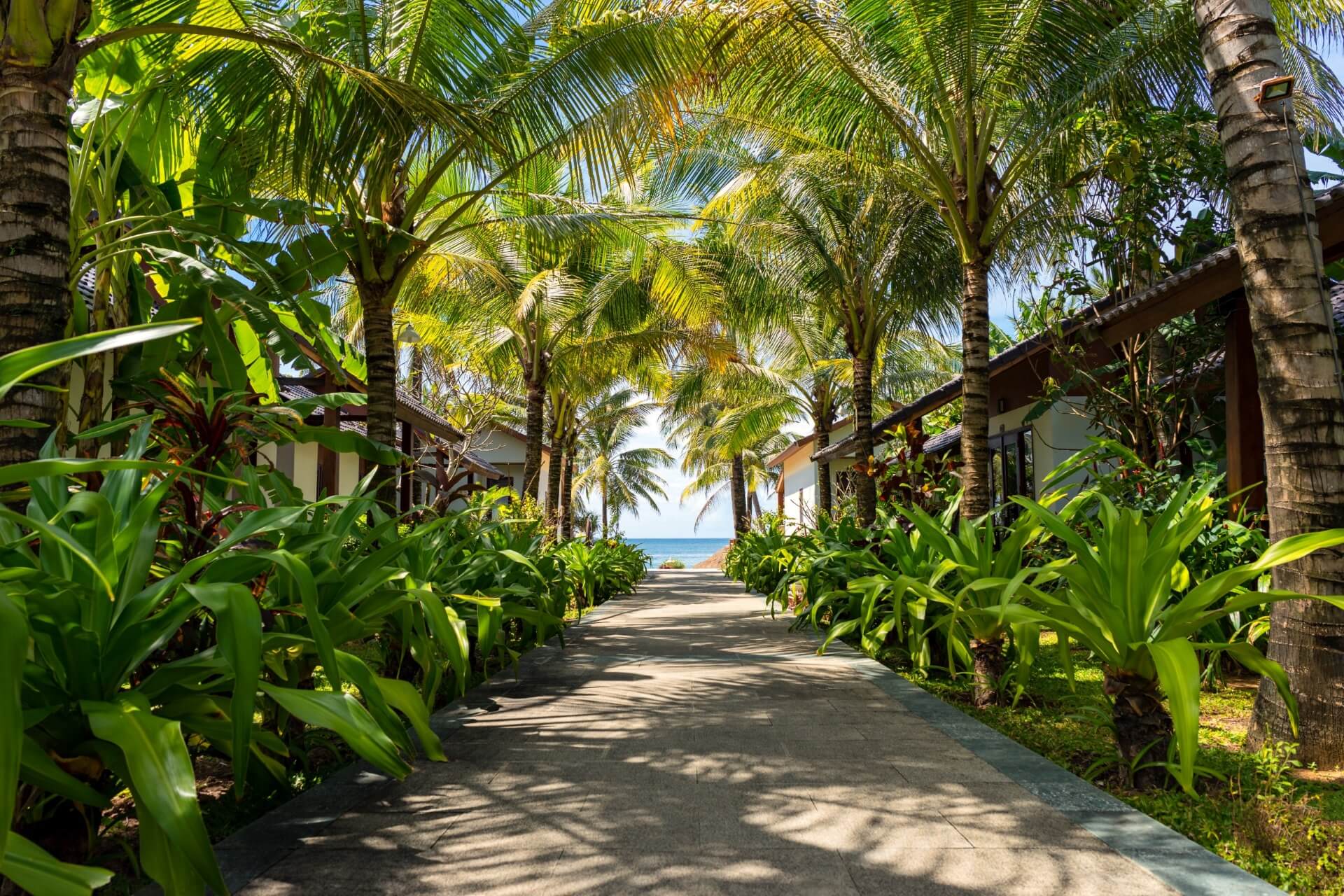
Considering the diverse climatic conditions of this unique country, it is impossible to give a definitive answer to this question. It is better to go to Phu Quoc Island in winter when there is no rain or extreme heat, and jellyfish are absent in the water. It is best to vacation at almost all southern resorts (Mui Ne, Phan Thiet, Vung Tau) from December to April, during the dry season.
In central regions (Hue, Hoi An, Da Nang), on the contrary, this period is the rainy season with high humidity, typhoons, and tsunamis, so it is best to visit from May to October. Northern resorts (Hanoi, Halong, Nha Trang) experience rain from April to November, and winter months are comfortable: warm and dry, though evenings can be quite cool.

